Planting hanging baskets
Planting hanging baskets does require a bit of ‘technique’ as producing a great display will not only be reliant on choosing the right plants, but also how you arrange them in the basket. Hanging baskets come in many different sizes, and even the smaller options are surprisingly heavy. Therefore, be aware that after the planting has been done, they must be hung from a very well fixed bracket. The sequence below, shows a straightforward, and very effective technique for planting hanging baskets.
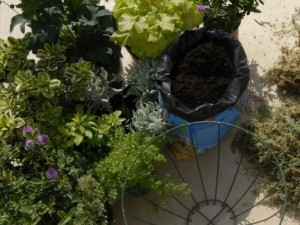 |
1. Pack as many plants as you can into as big a basket as you can manage, to make a dramatic show. A 35cm basket will take up to 30 plants. |
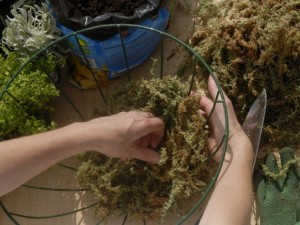 |
2. Carefully line the basket. Sphagnum moss is the best-looking material, although plant fibre or cardboard liners are available in various sizes. |
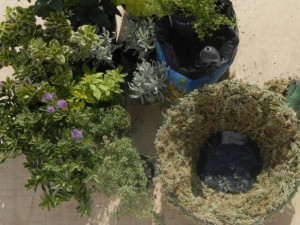 |
3. Cut a disc of black plastic, or a circle from a bag of compost, and arrange it in the bottom of the basket to reduce water loss. |
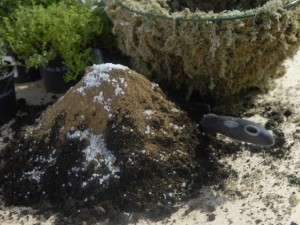 |
4. Mix water-retaining granules and slow-release fertiliser with peat-based compost, to conserve moisture and promote healthy growth. |
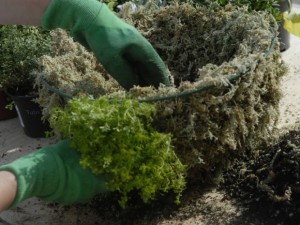 |
5. Fill the bottom of the basket with compost. Push root balls through the wire and moss, placing plants low, so that all the basket is covered. |
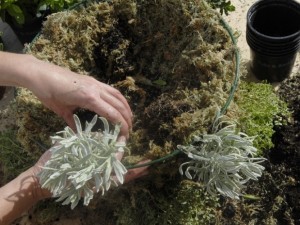 |
6. Tuck the lining around the plants to contain the compost. Add plants, lining and compost to fill the basket, firming the compost as you go. |
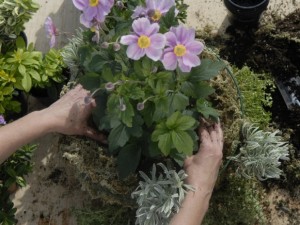 |
7. Add more lining material and compost mix to within 25mm of the basket rim. Make a dip in the middle of the compost for the centrepiece. |
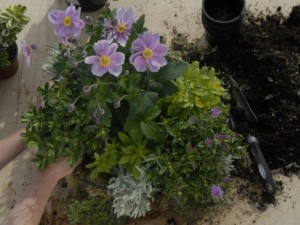 |
8. Leave a little space around the middle of the basket for the edging plants and infill with filler plants to make a full basket. |
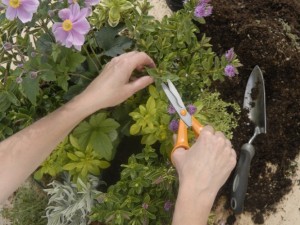 |
9. Firm the compost well with your fingers. Tidy up any plants that have been damaged and remove brown leaves or spent flowers. |
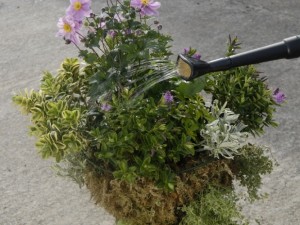 |
10. Water the basket thoroughly to consolidate the compost around the roots. Check the compost regularly to make sure that it doesn’t dry out. |
Hanging basket tips
- A bucket is useful for supporting a hanging basket when planting up, to allow plants to trail over the edge without damage.
- If you have a greenhouse, you can make baskets from early spring. Keep them fed and watered so that they fill out, ready to be placed in position when the risk of frost has passed.
- Suitable plants for the centrepiece include upright geraniums, and upright fuchsias.
- Suitable plants for fillers include impatiens (busy lizzie), begonia, diascia, nemesia, petunia, and phlox.
- Suitable plants for edging include trailing fuchsia, trailing geranium, lobelia, helichrysum, and verbena.
